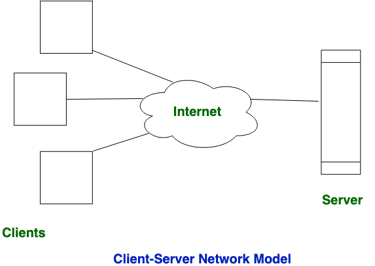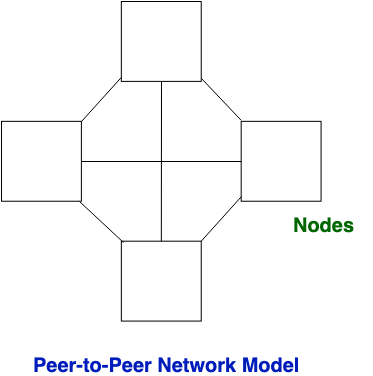Bitcoin’s Design: A foundation for freedom
873384
TL;DR:
Bitcoin’s architecture makes it unique:
In Bitcoin’s peer-to-peer model, every participant runs the software and controls their own transactions without relying on a central authority.
Bitcoin’s rules are fixed and transparent. Its supply is limited to 21 million coins, ensuring fairness and predictability.
With no central authority deciding its value, Bitcoin reflects prices set purely by its users—a truly free market for money.
Why do people say anyone can use Bitcoin? Why is it a neutral money? Why can't anyone stop it?
Answers lie within the Bitcoin's network architecture - a design so simple yet robust that it empowers individuals while challenging the very concept of central control.
The Bitcoin software is freely downloadable and operable on most machines. Once properly configured, it seamlessly connects with other nodes in the network.
Each node is like your personal server. It holds all the rules of Bitcoin and a full record of every transaction ever made. This means anyone running a node doesn’t need to rely on others to verify transactions - they can check and approve them independently, making them completely self-reliant when using the network.
“A node is literally the Bitcoin core software which contains the rules of Bitcoin, a copy of the blockchain (all the transactions from the beginning of Bitcoin’s time).” – Arman the Parman.
For Bitcoin’s network to exist, only two nodes need to connect. The more they link together, the harder it becomes for any external actor to shut the system down. Attempting to disrupt it would be like playing whack-a-mole against a constantly growing and evolving network of nodes.
This describes a peer-to-peer (P2P) network model, a stark contrast to the widely used Client-Server model that relies on central control. P2P architecture, combined with the Proof-of-Work consensus mechanism, ensures Bitcoin’s decentralized nature as an open protocol.
In a Client-Server model, like with banks, a central server approves or denies your transactions. In Bitcoin’s Peer-to-Peer (P2P) model, you use your own server to verify and authorize transactions yourself, without needing permission from a central authority. This gives you full control over your money.
Because Bitcoin’s software is open to use, anyone can join or leave the network at will. This neutrality is critical, as it maximizes scalability. Bitcoin welcomes everyone, regardless of identity, geography, or affiliation, provided they can meet one of these minimal requirements:
Running a node: Cover the cost of operating a node (hardware and electricity) and have a basic understanding of how to set it up and maintain it.
Using a wallet: Download a wallet application on a smartphone and have a basic understanding of how to use it to send and receive Bitcoin.
Participants can take on multiple roles:
→ Run a full node, lightweight node, or mining node.
→ Be a developer.
→ Operate a business built on Bitcoin.
→ Or be all the above at once.
Regardless of the role, using bitcoin and participating to the network offers a similar experience, because in its design, Bitcoin’s monetary issuance is equally revolutionary.
The only way to issue new coins is through the Coinbase reward, given to miners for maintaining consensus of the network (through Proof-of-Work). This is controlled by a difficulty adjustment mechanism, ensuring a new block is created roughly every 10 minutes.
Over 32 epochs, taking approximately 4 years each, 21 million bitcoins will be mined. After that? No more coins will ever be produced. (For more detail, see this: Controlled Supply.)
Because no central authority controls Bitcoin’s supply - and its issuance is fixed and transparent—Bitcoin reflects the most natural market prices. These prices aren’t manipulated by policy changes or opaque decisions; they embody pure value as determined by its users. This positions Bitcoin as the freest money market the world has ever seen.
Bitcoin is a system built on predictability. Its rules are fixed, transparent, and unchanged since its inception.
I'll let you think about this illustrative example:
“Poker works as a game because the rules don't change we can formulate strategies and compete with one another in a productive way, but if you want to drive people insane and really create a lot of conflict just try changing the rules of the game every few hands and this applies to any game especially money that's what inflation's doing nobody knows the rules of the US dollar, how many are in circulation, how many will be in circulation, who's profiting, we don't even know exactly who the shareholders of the Fed are, what's their dividend, what are their criteria for deciding how much how many dollars to produce, who's getting it first, who's going to be the fed chair next year; like there's all of this uncertainty injected into managing the asset that's intended to be an insurance policy against uncertainty that it's just oxymoronic in a way; and so bitcoin is another way to look at it, is the most certain form of money we've ever had and if money is an insurance policy for dealing with uncertainty you would want maximal credibility in the properties of money to deal with that uncertainty and that is bitcoin.”
– Robert Breedlove in Impact Theory.
Bitcoin’s unchanging rules allow participants to make informed, long-term decisions, ensuring the network’s sustainability.
This lasting and carefully crafted design allows anyone in the world to participate on equal footing.
It doesn’t matter who you are, where you live, or what your background is - everyone operates under the same rules.
There are no special privileges, no gatekeepers, and no hidden decisions.
This openness ensures that anyone, anywhere, can access a fair and transparent financial system built to include, not exclude




